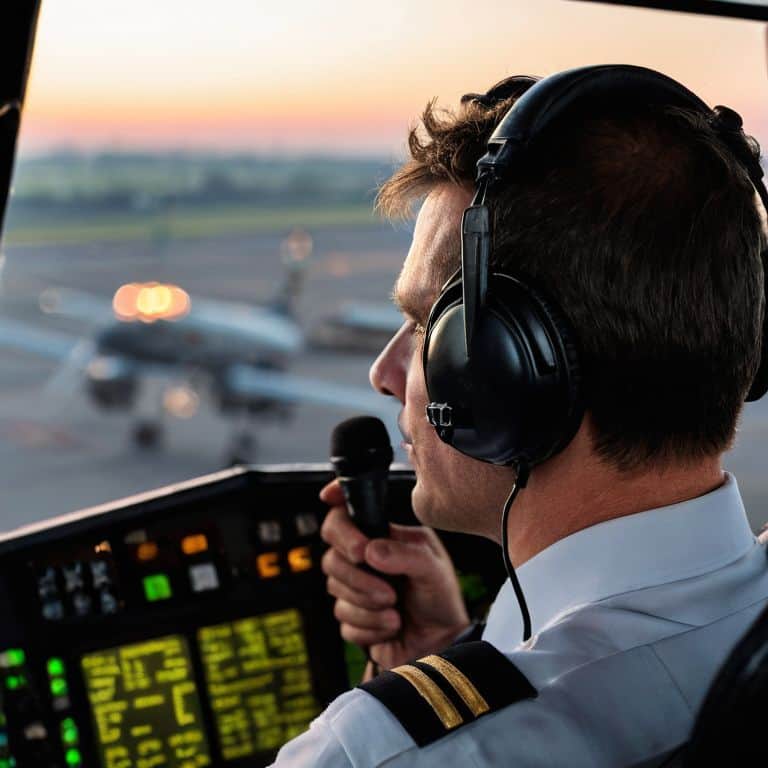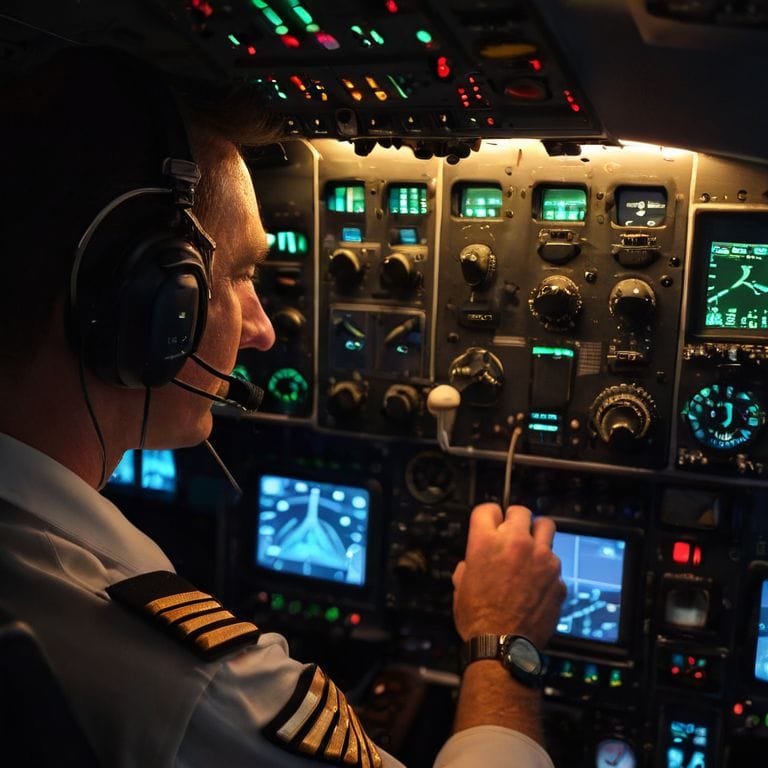I still remember my first flight as a student pilot, feeling overwhelmed by the constant stream of aviation radio calls crackling through the comms system. It was like trying to decipher a foreign language, and I’m sure many of you can relate to that feeling when trying to how to understand aviation radio calls. But the truth is, it’s not as complicated as it seems. With a little practice and patience, you can crack the code and start communicating with air traffic control like a pro.
In this article, I’ll share my no-nonsense approach to demystifying aviation radio communications. You’ll learn the fundamentals of radio etiquette, how to identify key phrases and terminology, and most importantly, how to stay calm and focused during critical moments of communication. My goal is to provide you with practical, real-world advice that you can apply immediately, whether you’re a seasoned pilot or just starting out. By the end of this guide, you’ll be well on your way to becoming a confident and competent communicator in the skies.
Table of Contents
Guide Overview: What You'll Need

Total Time: 1 hour 30 minutes
Estimated Cost: $0 – $10
Difficulty Level: Intermediate
Tools Required
- Computer (with internet connection)
- Headphones (for listening to audio recordings)
Supplies & Materials
- Aviation Radio Guide Book (optional)
- Online Resources (e.g., YouTube tutorials, aviation websites)
Step-by-Step Instructions
- 1. First, let’s start by familiarizing ourselves with the basic terminology used in aviation radio communications. This includes understanding the phonetic alphabet, which is used to clearly communicate letters and numbers over the radio. For example, the letter “S” is pronounced as “Sierra” and the number “9” is pronounced as “Niner”. Mastering this alphabet is crucial for effective communication with air traffic control.
- 2. Next, we need to understand the different types of radio calls that are used in aviation. These include routine calls, such as requesting clearance for takeoff or landing, and emergency calls, such as declaring an emergency or requesting assistance. It’s essential to recognize the tone and language used in each type of call to respond appropriately.
- 3. Now, let’s move on to decoding radio transmissions. This involves listening to the radio call and breaking it down into its individual components, such as the call sign, location, and request. For example, a transmission might sound like: “Cessna 123, this is Juneau Tower, cleared for takeoff on runway 26.” We need to identify the key elements of this transmission, including the call sign, location, and instruction.
- 4. To improve our understanding of aviation radio calls, it’s helpful to listen to real-life transmissions. We can do this by tuning into online radio feeds or visiting a local airfield to listen to live transmissions. This will help us get used to the rhythm and flow of radio communications and improve our ability to recognize and respond to different types of calls.
- 5. Another important step is to practice responding to radio calls. This can be done by role-playing with a friend or using online simulation tools. We need to practice using the correct terminology and following standard protocols for responding to different types of calls. For example, if we receive a transmission from air traffic control, we need to respond with our call sign and a clear acknowledgement of the instruction.
- 6. As we become more comfortable with understanding and responding to radio calls, we can start to focus on nuances such as tone and inflection. Air traffic controllers use different tones and inflections to convey urgency or importance, and it’s essential to recognize these subtle cues to respond appropriately. Paying attention to tone can help us understand the context and priority of the transmission.
- 7. Finally, let’s put it all together by practicing a simulated radio communication scenario. We can use online resources or work with a flight instructor to simulate a real-life scenario, such as requesting clearance for takeoff or responding to an emergency call. By practicing under realistic conditions, we can build our confidence and improve our ability to understand and respond to aviation radio calls.
Decoding Aviation Radio

As we dive deeper into the world of aviation radio communications, it’s essential to decode the lingo used by pilots and air traffic controllers. This is where aviation radio phraseology examples come into play, helping you understand the standardized language used in transmissions. By familiarizing yourself with these examples, you’ll be better equipped to comprehend the conversations between pilots and air traffic control.
When engaging with air traffic control, pilot radio communication best practices dictate that you use clear and concise language, avoiding any ambiguity. This is where ATC communication protocols come into effect, ensuring that all transmissions are standardized and easy to understand. By following these protocols, you’ll be able to communicate effectively with air traffic control, even in high-pressure situations.
To take your understanding to the next level, it’s crucial to understand ICAO English language standards, which provide a framework for clear and concise communication. By grasping these standards, you’ll be able to decipher even the most complex aviation radio terminology, including air traffic control call signs. With practice and patience, you’ll become proficient in understanding aviation radio terminology, enabling you to navigate the skies with confidence.
Cracking Radio Phraseology Codes
Now that we’ve covered the basics of decoding aviation radio, let’s dive deeper into cracking radio phraseology codes. Think of it like learning a new language – at first, it sounds like gibberish, but with practice, you’ll start to pick up on patterns and phrases. In aviation radio, these codes are used to convey complex information in a concise manner. For example, phrases like “clear for approach” or “descend to 3,000 feet” are used to guide pilots through critical phases of flight.
As you listen to more transmissions, you’ll start to recognize these phrases and understand their context. It’s like having a mental checklist of common phrases and their meanings. With time and practice, you’ll be able to decipher even the most complex radio communications with ease. Remember, the key is to break it down step by step, just like navigating through a flight plan.
Mastering Atc Communication Protocols
To master ATC communication protocols, think of it like navigating through a familiar airfield. You need to know the standard procedures and phrases to avoid confusion. It’s not about memorizing a script, but rather understanding the context and purpose behind each transmission. I like to break it down into simple checklists, just like a pre-flight briefing.
By doing so, you’ll be able to focus on the essentials: clearly stating your intentions, understanding instructions, and responding accordingly. Remember, effective communication with air traffic control is key to safe and efficient flight operations. With practice, you’ll become proficient in using standard phraseology, and your interactions with ATC will become second nature.
Tuning In: 5 Key Tips to Crack the Code of Aviation Radio Chatter

- Start by familiarizing yourself with common aviation radio terminology, just as you would learn key phrases in a foreign language before traveling abroad
- Listen to live ATC transmissions online to get a feel for the flow and rhythm of radio communications, and try to identify the different types of calls and responses
- Practice decoding radio phraseology by breaking down transmissions into individual components, such as call signs, instructions, and acknowledgments
- Focus on understanding the context and purpose of each transmission, rather than just trying to memorize specific phrases or protocols
- Use online resources or study guides to learn about ATC communication protocols and standard procedures, and review them regularly to reinforce your knowledge and build confidence
Key Takeaways for Mastering Aviation Radio Calls
Understanding aviation radio calls is a skill that can be developed with practice and patience, allowing for effective communication with air traffic control
Decoding radio phraseology codes and mastering ATC communication protocols are crucial steps in becoming proficient in aviation radio communications
By following a step-by-step approach and breaking down complex topics into simple, understandable guides, anyone can learn to navigate the world of aviation radio calls with confidence
Tuning In to Clarity
Understanding aviation radio calls is like navigating through a dense fog – it requires patience, practice, and a keen ear for the nuances of language, but with the right mindset, the static clears and the path to safe and effective communication becomes crystal clear.
Daniel Sato
Staying on Frequency: A Conclusion
As we wrap up our journey into the world of aviation radio calls, remember that mastering radio communication is all about practice and patience. We’ve covered the basics of decoding aviation radio, from cracking radio phraseology codes to understanding ATC communication protocols. By following these steps and staying committed to learning, you’ll be well on your way to tuning in to the unique language of aviation radio. Whether you’re a student pilot or simply an enthusiast, the ability to understand aviation radio calls will not only enhance your safety but also deepen your appreciation for the intricacies of flight.
As you continue on your path to becoming proficient in aviation radio communication, keep in mind that every transmission is an opportunity to learn. Don’t be discouraged by initial confusion or uncertainty. With time and dedication, you’ll find that the once-foreign language of aviation radio becomes second nature. So, stay focused, stay calm, and always remember to keep your communications clear and concise. The skies are filled with endless possibilities, and understanding aviation radio calls is your first step into a broader world of aviation discovery.
Frequently Asked Questions
What are the most common aviation radio calls I should know to start communicating with air traffic control?
Let’s start with the basics. Common calls include “Mayday” for emergencies, “Pan-Pan” for urgent situations, and routine calls like “Clearance” and “Contact”. You’ll also hear “Cleared for landing” and “Taxi to”. Don’t worry, it’s like learning a new language – with practice, you’ll be fluent in no time.
How do I distinguish between different types of transmissions, such as clearances, instructions, and acknowledgments?
Think of it like navigating through different airspace – each transmission type has its own unique ‘frequency’. Clearances are like takeoff clearances, instructions are like vectors, and acknowledgments are like confirmations. Listen for keywords like ‘cleared’ for clearances, ‘proceed’ for instructions, and ‘roger’ or ‘wilco’ for acknowledgments.
Are there any specific tips for improving my ability to understand aviation radio calls in noisy or high-stress environments?
In noisy or high-stress environments, focus on the rhythm and cadence of the radio calls. Listen for key phrases and familiar call signs, just like a pilot scanning instruments during a busy approach. Practice active listening by repeating calls back to yourself, and don’t be afraid to ask for clarification if you’re unsure.



